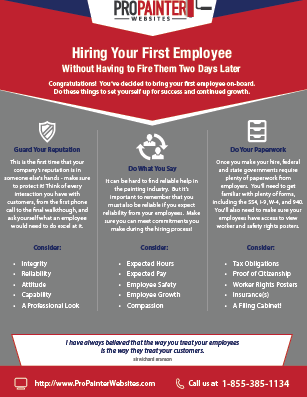Weather Condition'S Impact On Commercial Outside Painting: Essential Expertise For Success
Weather Condition'S Impact On Commercial Outside Painting: Essential Expertise For Success
Blog Article
Article By-Vilstrup Dohn
When you're preparing an industrial outside painting task, don't undervalue the influence of climate on your outcomes. You need to consider aspects like temperature, humidity, and precipitation, as they can make or break your paint task. As an example, did you know that ideal conditions ask for specific temperature varieties and moisture degrees? Failing to keep an eye on these facets can cause unequal coatings or perhaps damage to fresh paint. Comprehending these aspects is key to achieving a long-lasting, professional outcome. So, what office interior painting should you be wary of?
Temperature level Considerations
When it comes to business exterior paint, temperature level plays an essential duty in the end result of your project. If you're repainting in severe warm, the paint can dry out as well quickly, resulting in problems like inadequate attachment and irregular surfaces. You want to go for temperature levels between 50 ° F and 85 ° F for the very best outcomes. Below 50 ° F, paint may not cure effectively, while above 85 ° F, you risk blistering and cracking.
Timing your task with the ideal temperature levels is important. Beginning your job early in the morning or later on in the afternoon when it's cooler, particularly during hot months.
Likewise, take into consideration the surface area temperature level; it can be significantly higher than the air temperature, specifically on warm days. Utilize a surface area thermostat to examine this prior to you begin.
If temperatures are unforeseeable, watch on the weather forecast. Unexpected temperature decreases or heat waves can thwart your strategies. house painters do not want to start painting just to have the problems change mid-project.
Moisture Levels
Humidity levels dramatically influence the success of your commercial exterior painting project. When the moisture is expensive, it can prevent paint drying and healing, bring about a series of issues like poor adhesion and complete quality.
If you're planning a work during moist problems, you might locate that the paint takes longer to dry, which can expand your task timeline and rise costs.
On the other hand, reduced moisture can additionally pose obstacles. Paint might dry also quickly, avoiding appropriate application and resulting in an unequal finish.
You'll wish to check the moisture degrees closely to ensure you're functioning within the ideal variety, generally between 40% and 70%.
To obtain the very best results, consider making use of a hygrometer to measure humidity prior to starting your job.
If you find the degrees are outside the ideal array, you might need to readjust your timetable or pick paints developed for variable problems.
Constantly get in touch with the manufacturer's guidelines for certain suggestions on humidity resistance.
Rainfall Impact
Rain or snow can considerably interrupt your industrial exterior painting plans. When rainfall takes place, it can remove fresh applied paint or develop an irregular surface. Ideally, you wish to choose days with dry climate to ensure the paint sticks properly and treatments effectively. If you're captured in a rain shower, it's best to halt the job and wait on conditions to improve.
Moreover, snow can be even more destructive. Not just does it produce a damp surface, yet it can additionally reduce temperature levels, making it hard for paint to dry. This can result in problems like peeling or blistering down the line.
It's crucial to examine the weather report before starting your project. If rain or snow is forecasted, consider rescheduling.
Constantly remember to enable appropriate drying out time in between layers, specifically if the weather condition stays unpredictable.
Verdict
In conclusion, watching on the weather condition is important for an effective industrial exterior painting task. By checking temperature, humidity, and precipitation, you can guarantee the most effective problems for application and healing. Keep in mind to prepare your work around positive climate and always adhere to maker standards. With the ideal strategy, you'll attain a durable, attractive surface that can endure the components. Do not let the weather catch you off-guard-- stay notified and repaint clever!
